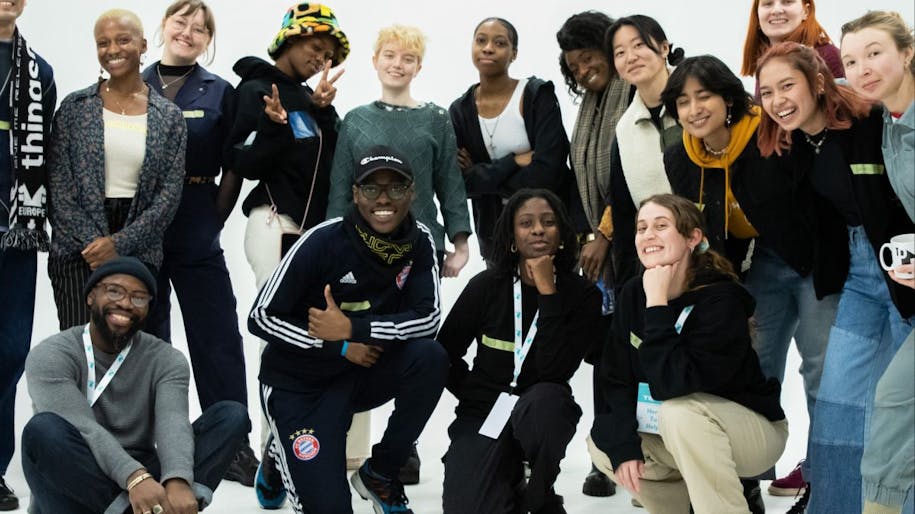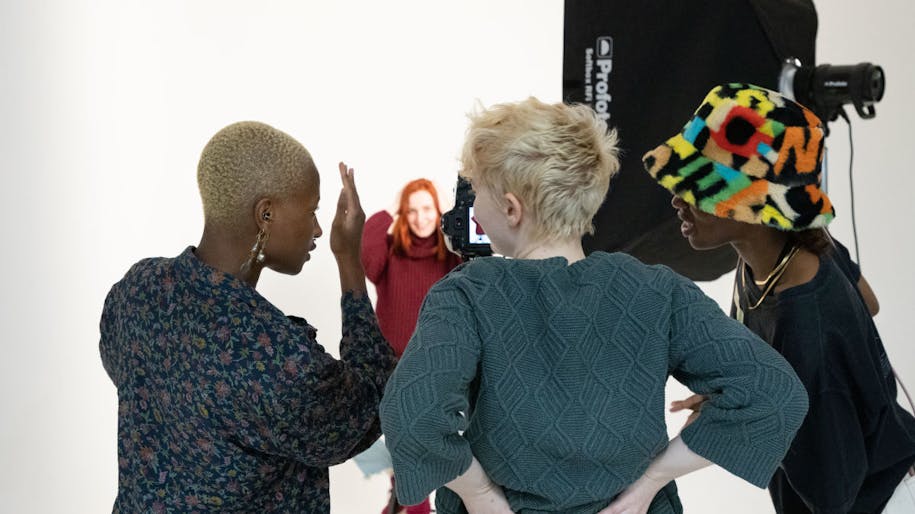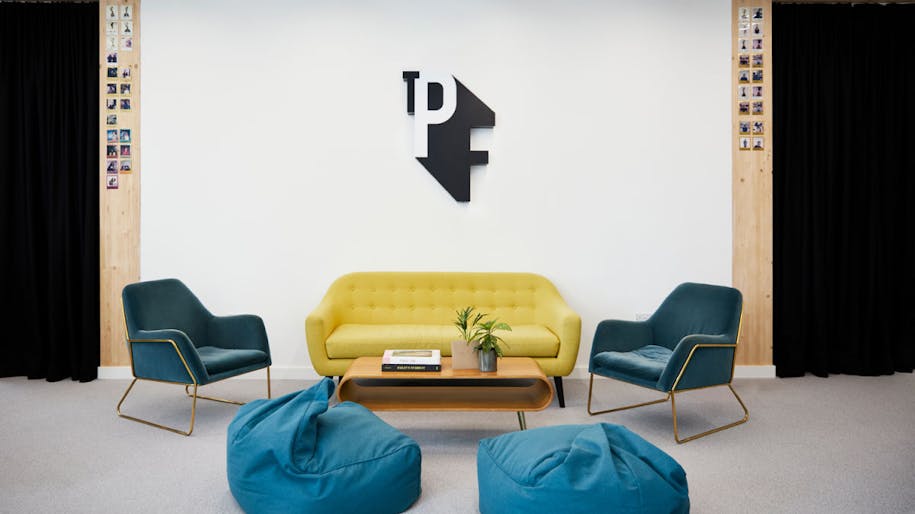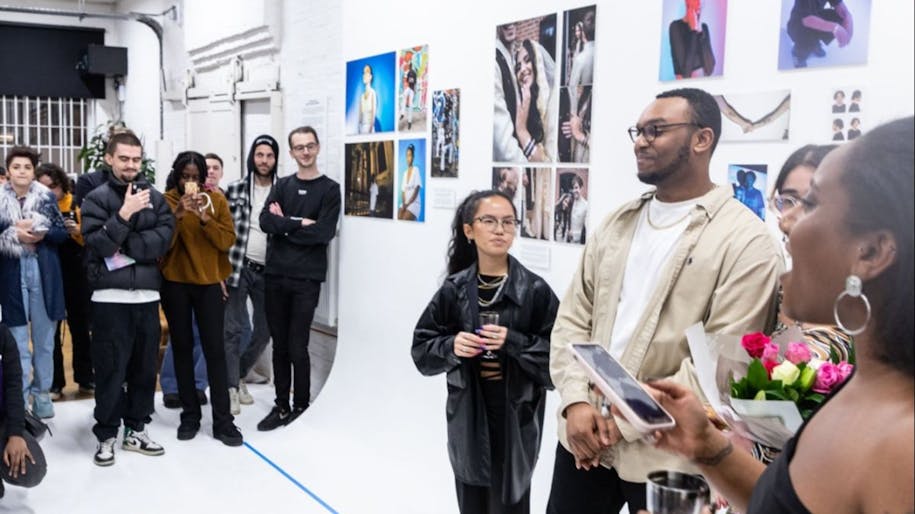
Meet the Tenants: Mikael Johansson & Dom Graham-Hyde, Founders of The Photography Foundation
For the latest in our series introducing the Design District community, we talk to the founders of The Photography Foundation, an organisation creating pathways to professional photography for under-represented young adults in London
Design District (DD): Hello Mikael and Dom, please tell us a bit about your backgrounds and how The Photography Foundation came into being?
Mikael (MJ): My professional background has always been in property and real estate. I spent 10 years in the corporate property world working on a vast range of projects, including our new home: Greenwich Peninsula. Always wanting to work for myself, I set up my own property development company in 2015 where I’ve been most active abroad, running largescale resort developments.
The Photography Foundation (TPF) was an idea my good friend Dom and I came up with back in 2016. We wanted to do something together that would combine our skills and create a model for doing good that focused not only on its charitable mission, but also on the pursuit of profit for social good. In 2019, we were proud to officially launch both our business (Storytellers London) and charity (TPF).
Dom (DGH): I had a brief stint as a marketing and branding “expert” before moving into film and video work. I am obsessed with music videos so used to write and direct those alongside doing some 1st AD work on shorts and features. I switched to photography back in 2016 after a swift 10 month illness led me to making some lifestyle changes and it’s been my mainstay ever since.
Mike and I had been chatting for a while about a project that would combine my love of photography (and ire at the Catch-22 world of work experience) and his involvements in philanthropy. We were keen to offer people from less advantaged backgrounds the chance to bridge the opportunity gap. Photography — aside from being a passion of both of ours — seemed like a perfect gateway for learning skills that can improve a person's chances in life.
'Our mission is simple: to create pathways to professional photography for under-represented young adults in London, empowering them to launch a career in the creative industries.'
DD: How would you describe The Photography Foundation to someone coming across it for the first time?
DGH: Our mission is simple: to create pathways to professional photography for under-represented young adults in London, empowering them to launch a career in the creative industries. For many, a lack of financial resources, opportunities or industry connections mean that a career in photography is out of reach. We believe that talent and motivation should be more important than who you know or where you come from.
MJ: We use photography as a skill for life — an educational or developmental tool that’s also a positive way to build confidence and connections. We promote the art of photography, bringing it to a new, wider and more diverse audience.
Of course, we are both a charity and a business. On the business side, we operate a professional photography and video studio working with a broad range of clients. We are a one-stop shop for all photography and video services, which means we work with some really interesting clients. We have our own in-house team so we control the entire process and deliver exceptional quality.
The great benefit of our setup is that our trainees who come through our charity have exposure to the business side of the organisation and are able to take on paid work experience opportunities with us.
DD: Like Design District, The Photography Foundation is supporting London's creatives. Why is this important and what do you see as being the biggest challenges facing the sector?
DGH: Accessibility is still a big problem in the creative industries. So much depends on getting work experience or interning, or being a runner with a very low (often non-existent) income. This immediately puts a huge barrier to entry for a large group of people. So it’s imperative that social enterprises like ours exist, along with places like Design District that offer affordable rates and foster community.
DD: What advice would you give to young photographers starting out in the industry?
DGH: Look for a community of like-minded, supportive people to join, as well as organisations like TPF. And practice! If you’re truly motivated to get into the industry, you need to get out there whenever you can, in whatever guise you can, and start building both your confidence and your portfolio!
DD: Which emerging photographers are really exciting you right now?
DGH: Our own graduates obviously! You can find them all on the trainee pages of our website. For some quick links try @danielhousley, @fikayoadebajo, @ebonylouisebarrett and @geornden. But you should check them all out — there are too many to list here and they’re all amazing.
DD: Why have you chosen Design District?
DGH: To be part of a community, with landlords who support what we’re doing and who are doing similar things. It’s a good fit for us.
DD: What’s your favourite thing about your new space in building D2 by Mole Architects?
DGH: Our sloping high ceilings and all the light!
DD: And about the district?
DGH: The community and its wide range of interesting, friendly and supportive tenants.
DD: What’s next for The Photography Foundation?
DGH: We have huge growth happening — expanding our programme and reaching new groups, initiating community projects, photography competitions, exhibitions, events and an online agency and resource hub!
DD: Where can people find out more about The Photography Foundation?
DGH: Our instagram is the most up to date resource. And sign up to our newsletters at thephotographyfoundation.org.





